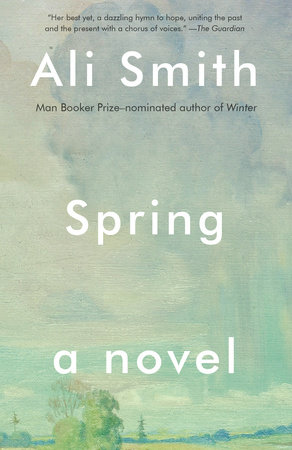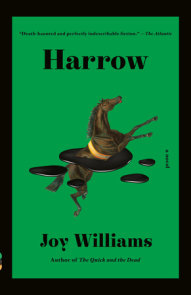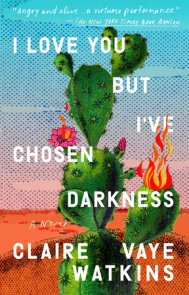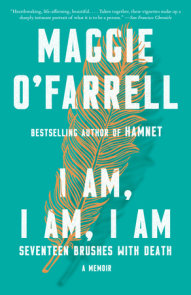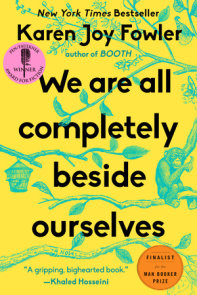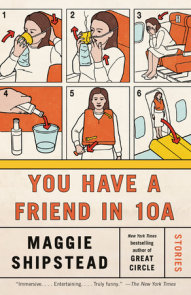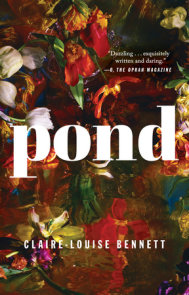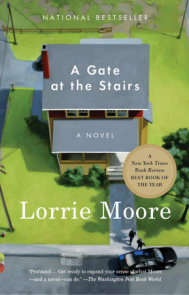READERS GUIDE
The questions, discussion topics, and reading/viewing list that follow are intended to enhance your reading group’s discussion of Spring by Ali Smith. In this third novel in her Seasonal Quartet, Smith tells the intertwining stories of a troubled TV director, a custody officer at an immigration removal center, and a preternaturally gifted schoolgirl who might just save them all.Introduction
What unites Katherine Mansfield, Charlie Chaplin, Shakespeare, Rilke, Beethoven, Brexit, the present, the past, the north, the south, the east, the west, a man mourning lost times, a woman trapped in modern times?Spring. The great connective.
With an eye to the migrancy of story over time and riffing on Pericles, one of Shakespeare’s most resistant and rollicking works, Ali Smith tell the impossible tale of an impossible time. In a time of walls and lockdown, Smith opens the door.
The time we’re living in is changing nature. Will it change the nature of story?
Hope springs eternal.
Questions and Topics for Discussion
1. If you have read Autumn and Winter, how does Spring connect with the earlier Seasonal Quartet novels? How is it different? What are the common themes amongst the books?
2. How is Spring a novel about the importance of stories? How are Richard, Paddy, Brittany, Alda and Florence all storytellers? How is telling and hearing and sharing stories—and a variety of stories—crucial to our individual and collective lives?
3. How do stories connect people in Spring? How are both friends and strangers brought together through stories?
4. Brittany and Florence play a game called “Lucky 13 on the train ride up to Scotland. How would you answer the thirteen questions? “What’s your favorite color, song, food, drink, thing to wear, place, season, day of the week. What animal would you be if you were an animal. What bird. What insect. What one thing are you really good at. How would you most like to die” (p. 185). What is important about this child’s game? Do you feel silly answering the questions, or does the game give seriousness and consequence to things you don’t usually think about?
5. What is the importance of the story Brittany tells about her name and her mother, the geography book? Why does telling the story make Brittany want to cry?
6. What is the author saying about borders and the crossing of borders? Florence says “What if . . . instead of saying, this border divides these places. We said, this border unites these places. This border holds together these two really interesting different places” (p. 196). What do you think about this idea?
7. Even though Brittany calls herself the machine when she’s with Florence, she finds herself, in Florence’s presence, becoming more alive and herself. “She is clever again. She is witty and entertaining” (p. 198). Why do you think this happens to Brittany?
8. Discuss the clouds in the novel. “HOT AIR” is handwritten on the cover of Florence’s notebook. Artist Tacita Dean’s short film “A Bag of Air” and Dean’s paintings and photographs of clouds are discussed. Richard thinks about how the iCloud is where information and images are stored. “Air, something we hardly ever notice or think about, something we can’t live without” (p. 220).
9. Why is “The Story of Richard Doubledick” by Charles Dickens included in Spring? What is the message of this novel (which is less well-known than some of his other works)? And what is the connection to this novel?
10. Spring, the season, brings hope. How is Spring, the novel, also filled with hope? Discuss the Latin words on Florence’s school blazer, vivunt spe (live in hope), the Beethoven song An Die Hoffnung (dedicated to hope), and any other overt or hidden references and allusions to hope.
11. How are spring and this novel both about rebirth and reconciliation?
12. Discuss the relationship between Richard and Paddy.
13. What do we know of Richard and his daughter? And does he distinguish between his memories of his real daughter and those of his imaginary daughter? What is the meaning of Paddy’s advice to Richard, “Take her to see things. And tell her to send me a postcard whenever you do go to see things or places” (p. 75)?
14. Why postcards? How are postcards a recurring theme throughout this novel and the three previous novels? How do postcards connect Katherine Mansfield and Rainer Maria Rilke? What happens to Richard’s idea of a film built around postcards the two of them sent?
15. Why is the last postcard Richard sends to Paddy one that depicts Tacita Dean’s clouds?
16. Mountains also feature frequently in Spring. What do mountains—both real and imaginary—represent in the novel?
17. Each of the Seasonal Quartet novels riffs on a Shakespeare play; this one on Pericles, which has been described as a play of migration and family separation. Have you read Pericles? How does this novel connect to that play?
18. The jacket copy of Spring reads, “The time we’re living in is changing nature. Will it change the nature of story?” Discuss what this means and how it is significant. Has Ali Smith changed the nature of storytelling and novels?
19. At one point, immigration officer Brittany says, “It’s about who was in charge of justice. Who gets to say what it is” (p. 295). Discuss this quote and how it relates to the book and to our world.
20. Why do you think Ali Smith has chosen to include two expatriate writers, Katherine Mansfield and Rainer Maria Rilke, and their near-meeting in Switzerland?
21. Discuss the place where Brittany works. It is not a prison, but “a purpose-built Immigration Removal Center with a prison design” (p. 160). How is Brittany like a machine in this prison system?
22. Near the end of the novel, Alda says, “These stories are deeply serious, all about transformation” (p. 276). How is this just like Spring (both the novel and the season)?
23. Paddy tells Richard at one point, “There’s ways to survive these times, Doubledick, and I think one way is the shape the telling takes” (p. 21). Discuss what Paddy means and what she’s advising Richard—and us—to do.
24. How is Spring a book about the present-day with roots in the cultural past?
25. Brittany Hall is intelligent and self-aware—she knows that where she works isn’t good. “There were people in here, in a place designed when it was first built for 72-hour detention at the most, who’d been here for years, years and years” (p. 135). Why does she keep working there?
26. Who is addressing the reader in the beginning of part one and then at the beginning of part two?
27. What happens at the end of the novel?
28. What do you think of Florence? What does she represent? Is she the future? “The girl is like someone or something out of a legend or a story, the kind of story that on the one land isn’t really about real life but on the other is the only way you ever really understand anything about real life” (p. 314).
29. The British newspaper The Observer has written about Spring: “The third book in Ali Smith’s quartet is her best yet, a dazzling hymn to hope, uniting the past and present . . . Smith has always been a profoundly moral writer, but in this series of novels she is doing something more than merely anatomising the iniquities of her age. She’s lighting us a path out of the nightmarish now.” Do you agree with this? How might Ali Smith be lighting the way?







